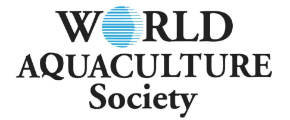OPTIMIZING WATER TRANSPARENCY AND PHYTOPLANKTON BLOOMS IN SHRIMP PONDS
Water quality plays an important role in the productivity of shrimp culture. Maintaining the water transparency at desirable levels (25-35 cm) is crucial to enhance the survival and growth of shrimp. Transparency refers to the penetration of light through water, which indicates the concentration of suspended solids. Suspended solids which make water turbid in shrimp culture systems include plankton blooms, flocculated organic matter, chemical precipitates, and sediment stirred up from the bottom of the pond. Presence of plankton blooms affect the sediment quality leading to release of toxic gases like ammonia in to the pond water. Application of zeolites and water exchange are routine practices in shrimp culture to control the turbidity. In the present study, application of natural silicates and plant extracts for the control of turbidity in shrimp ponds is discussed. Various natural zeolites were evaluated and shortlisted based on their cation exchange capacity (CEC). Plant extracts were evaluated for the control of ammonia levels and plankton blooms in the water. A formulation containing the selected zeolites and plant extracts was developed and evaluated for application in shrimp culture systems. Safety studies were conducted by incubating juvenile white shrimps (Penaeus vannamei) in water containing 10x dosage of the formulation for 72 h. There was no mortality, morbidity or indications of stress observed in the shrimps during the study period.
Trials were conducted in commercial shrimp farms in three different locations in India to evaluate the efficacy of the formulation in field conditions. The formulation was compared with other commercial products in adjacent ponds with comparable culture conditions, and an untreated pond with the same water source was maintained as control. Products were applied by broadcasting in to culture ponds and the water transparency was measured before and after application using secchi disk reading. Water transparency measured 4 h, 24 h and 48 h after application of the new formulation showed improvement (by 6-10 cm) as compared to the control and other commercial brands and the turbidity was observed to reduce further after second application (48 h) to the desired levels. Level of plankton blooms was also observed to significantly reduce with application of the formulation, as measured by plankton counts. The same trend was observed in three trial locations. There were no visible adverse effects observed in the shrimps after application. The dosage of the formulation was finalized at 10kg/ acre, and two consecutive applications at an interval of 2 days were finalized to reduce turbidity based on the field trials.













